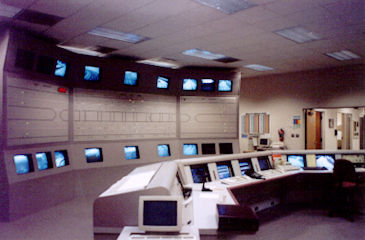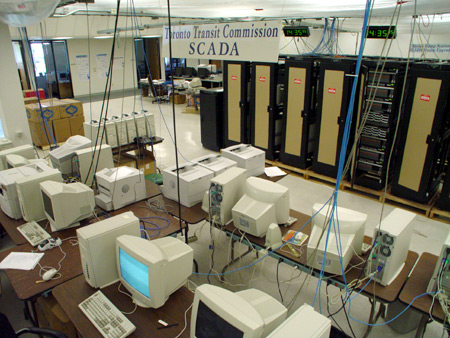Transdyn Helps Bring Traffic Under Control
Transdyn Helps Bring Traffic Under Control


Company Creates Control Systems for Utilities, Transportation
The highways of the future may not look like those in "The Jetsons," but if it's up to Transdyn Controls, commuters will have a lot more information about the roads they travel.
Transdyn, founded in 1975 and headquartered in Hacienda, provides real-time control and data management systems for water, gas and electric utilities, as well as transportation agencies.
Their systems enable the monitoring and control of complex systems, from vehicular tunnels in Colorado and Hawaii to county-wide electricity, water, and wastewater supplies.
Utilities an Initial Specialty
The company's initial work came in helping utilities automate their monitoring and reporting. An example of their work is a current project monitoring water and wastewater systems in Broward County, Florida.
"What they need to have is a way of remotely monitoring various sites in the field," explains Thomas McPharlin, Ph.D., vice president of technology for the company.
The cycle of water use in Florida begins with wells, which pump water out of the ground to a treatment plant, where it is filtered and processed for delivery to customers. Once used, it enters the sewage system, where a second series of pumps send it to the wastewater treatment plant and through the treatment process.
"The trend now is to integrate all this," McPharlin says. "It used to be that each little facility had its own computer system and there wasn't much communication between them. Now, the major issue is trying to integrate all the facilities that a utility might have."
Software and Hardware
As a specialty contractor, Transdyn supplies a range of services, from turnkey systems including design, engineering, installation, training and support to any one of those services.
For all-in-one solutions, the systems are designed, built, and tested in Pleasanton prior to their deployment in the field.
Components used include various types of sensors, remote radio transmitters, and a variety of computer networking solutions.
Transdyn also authors a software product, DYNAC, which offers the ability to acquire, communicate, manage, store, and display real time and historical information. The software is customized with appropriate graphics for each customer, whether it's the various stages in a water treatment plant or the information on traffic flow through a tunnel.
The Future of Transportation
McPharlin sees the greatest potential for growth in transportation, thanks in part to pending legislation which will require installation of systems which follow a new U.S. Department of Transportation standard for intelligent transportation systems.
"The reason for doing that is because it's a lot cheaper to put a computer system in than it is to build another interchange or another lane on a freeway," he says.
The idea is that improved management of existing freeways allows increased traffic flow and a higher level of safety.
"What's happening is integration, again: trying to integrate the traffic on the freeways with the signal synchronization on arterial roads, because if you've got a jammed up freeway you might want to change the sequencing of the signals to get traffic parallel to the freeway flowing better," he says. "Then, you want to get it organized with buses and transit systems and you can start combining everything that has to do with moving people and start exchanging information. That's the goal."
As the technology matures, he anticipates that drivers will soon have access to real time information about congestion, accidents, alternate routes, and more. Transdyn hopes to have a lot to do with that.
Photo: The traffic control room at the Hanging Lake Tunnel on I-70 in Colorado is typical of those found in Intelligent Transportation Systems.
Also in this issue...
- Robert Half International to Expand in Park
- Transdyn Helps Bring Traffic Under Control
- Business Bits
- Executive Profile—Steve Tanner, Tanner Insurance Brokers
- Hacienda Employees Enjoy Lunchtime Soccer
- Two Public Parks Totaling Over 9 Acres to Break Ground in Hacienda
- City of Pleasanton Unveils New First-Time Home Buyer Program
- Tri-Valley Herald, Convention & Visitors Bureau Team Up on Information Booklet
- Lucent Cycle Rice Brings 400 Riders to Hacienda on July 11
- Hacienda Index




